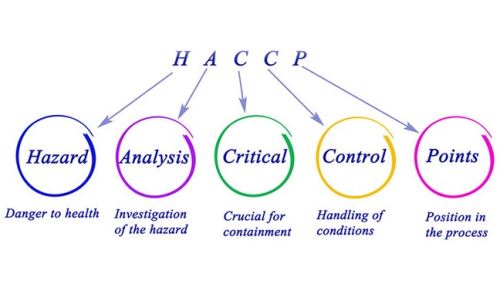
Soundproof doors for the healthcare sector
23 August 2024
Consumers must be able to 100% trust in the fact that the food they purchase is safe. After various food safety issues, such as the listeria bacteria, it has become top priority for many companies in their business operations. But why is food safety so important and how do you ensure that food safety is guaranteed?
In order to ensure food safety, there are several important points to focus on. Using the Codex Alimentarius, the World Health Organization (WHO) has set up the HACCP guidelines. Based on this, the affiliated countries draw up hygiene guidelines for food safety. Among other things, attention is paid to dealing with the temperature of the products during storage, transport and processing. But it also includes instructions regarding the cleaning and hygiene of the rooms, equipment and the personnel who come into contact with the food. Are the materials used in the area easy to properly clean, for example? Furthermore, attention is also paid to maintenance and automation within the company. Together with other guidelines from the hygiene guidelines based on the HACCP, this ensures food safety worldwide.

A HACCP plan, also known as a food safety plan, is drawn up based on the basic principles of the HACCP. The HACCP plan focuses on all topics that affect food safety in order to prevent food-borne infections and all the consequences thereof.
One of the important topics here is the temperature of the products throughout the entire process. For example, the HACCP plan obliges every company to comply with the temperature criteria that apply to certain products and the requirements regarding temperature control must be met. An important part of this is monitoring the temperature. This can be accomplished by sealing the conditioned rooms airtight with a properly insulating door. As a result, no air exchange occurs between two rooms while closed, ensuring that the temperature in the cooled room does not increase or decrease to an undesirable extent. As an additional advantage, the cooling installation has to work less hard in order to maintain the set temperature and less valuable energy is lost.
In addition to monitoring the correct temperature in a conditioned space, the finishing of the walls and doors is also important in a HACCP plan. For example, in order to comply with HACCP guidelines, the doors must have smooth and non-absorbent surfaces, so they can be easily cleaned and, if necessary, disinfected. Furthermore, the doors in areas where food is handled must be corrosion-resistant. A good solution for these requirements is the use of a stainless steel door. After all, stainless steel not only provides a bad adhesion surface for bacteria, but is also resistant to corrosion. If you opt for one of the durable Metaflex refrigerator or freezer doors, you seal off your space airtight and hygienically, and thus meet two important requirements for your HACCP plan according to the HACCP guidelines.

23 August 2024

2 May 2024

17 April 2024